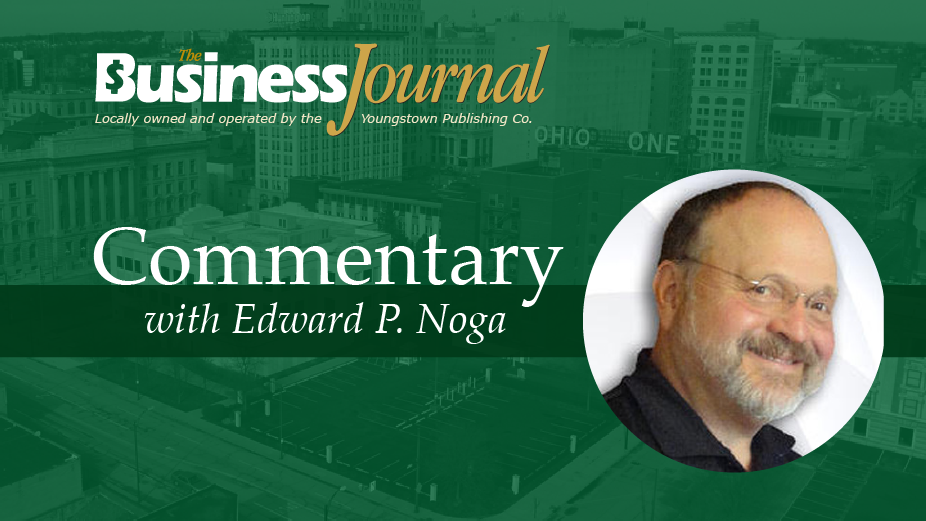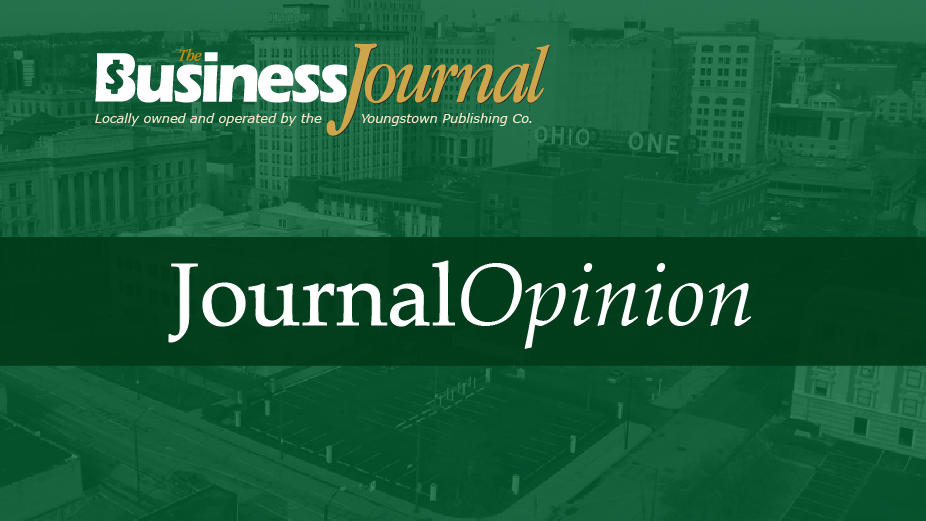Commentary: On the Road to Smart Transportation
By Edward P. Noga
YOUNGSTOWN, Ohio – Long, long ago and not so far away (sounds like the opening of “Star Wars”), credit cards, electric-car locks, cellphones, ATMs, synthetic car oil, artificial flowers, scanning cash registers, Door Dash, health screenings, soft-serve ice cream, freeways, disc brakes, self-serve gas pumps and much more came on the scene.
An array of responses – some positive, some negative, some skeptical, some disgusting, some ambivalent, some unbelievable and many more – met these arrivals. Rationales, reasons, projections and promises usually preceded whatever item was being introduced.
Some folks bought it. Some fought it. The rest were oblivious.
Because I am a resident of Youngstown, I researched the current Smart2 project that has changed the traffic patterns in and around downtown, the campus of Youngstown State University and the neighborhood surrounding St. Elizabeth Hospital and many other entities, buildings and businesses.
A few years back, when I had the privilege to serve on the Western Reserve Transit Authority Board of Directors, talk of future transportation needs and patterns in our nation surfaced often. Clogged streets and highways, demographic changes, climate concerns, health and wellness initiatives and other items that at first didn’t seem to have anything to do with buses and transportation, were suddenly on the table. On occasion, someone would bring up that in America we want more roads and parking lots everywhere.
When, however, flooding occurs because rainwater doesn’t sink into concrete or asphalt OR when paving, maintenance and snow removal suffers because we don’t have enough workers, equipment and tax revenue, we are all in an uproar.
So what does all this have to do with Smart2?
Well, my research on the website that explains Smart Cities and Smart2 projects took me into a world of future-thinkers and urban planners who have studied, calculated and proposed the future of transportation in many more realms than just how many cars, trucks and buses we might need.
The research of these thinkers and planners seemed to glean information from home and abroad, especially when it comes to alternate ways of getting from here to there.
The Smart approach uses cutting-edge technology to coordinate traffic signals, turning lanes and people movers of all types. In addition, the technology that alerts us to impending crashes (and sometimes brings our vehicles to a halt) can be used to increase safety and reduce accidents.
Additional research showed me that our city/region was one of the smaller areas in the nation that received the Smart allocations. I found out that previous YSU, city, county, hospital and regional planners saw this as a way of getting in on some groundbreaking thinking.
Yes, the thinking behind the Smart concept is a new and game-changing way of moving people.
Uh-oh, there’s the word “new” that makes some folks’ blood curdle. We sometimes don’t like “new.”
In the last several months, what I often hear (and sometimes find myself leaning the same way) is:
“They’re taking away my parking spaces. We need more parking!” (Yes, we do, and remember we used to have two large parking decks downtown).
“They’re reducing the number of lanes! What are they thinking?!” (Maybe they’re thinking that roadways are for movement, not parking.)
“The sidewalks are too wide!” (Might be safer than folks straddling the curbs and walking in the street especially while exiting large events.)
The comments above feed the notion that automobiles are the only way to move around. Yes, they are a very major part of the American experience. Is there more though?
Maybe! Remember when other new ideas came about and we said, “This will never work.” Well, many of the items I mentioned at the beginning of this column were in the “This will never work” category. The jury might still be out on some of them. Maybe someday others will go away. But the future builds on the past as it incorporates the creative minds of today.
Part of the Smart way will be smaller vehicles that take passengers around the university campus, downtown, riverside development, the hospital and adjacent neighborhoods. One aspect of the Smart way will allow bike access to all areas and to Mill Creek Park. Another will encourage pedestrian traffic on larger, well-lighted sidewalks.
We have been conditioned to believe that we always need to get into a car, even though gasoline costs often make us shrug and swoon. Reminds me of when I was living on the South Side and used to put my bike in the back of my vehicle when the car needed service on the segment of Market Street where most dealerships moved.
I biked back home and out again for the eventual pickup. Often folks said they saw me riding and were incredulous, especially when I told them that it was a little over four miles from my home to the dealership. Their usual reply was often something like, “Oh come on, that has to be 10 miles!” Nope. Four. And the exercise is good.
I am not a community planner and I lack the credentials that make me even close to saying, “This is what we should consider.” As someone who maneuvers through streets and traffic cones, however, I thought I would check a few things out and see what I came up with.
I am the first to admit that sometimes thinking outside the box challenges and even frightens us. Think, though, how much progress we have made because some folks pushed us to think Smart-er.
Copyright 2024 The Business Journal, Youngstown, Ohio.


